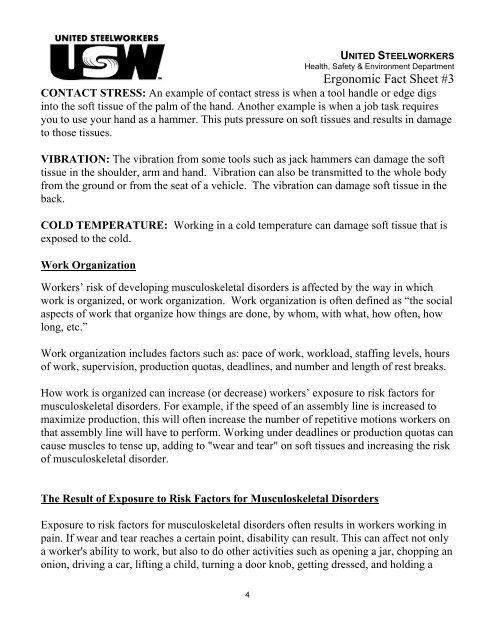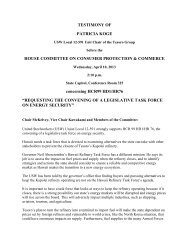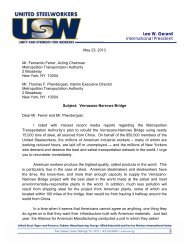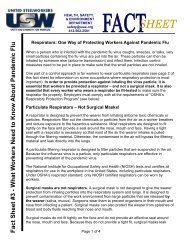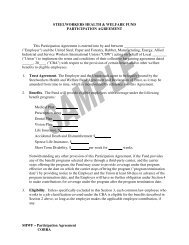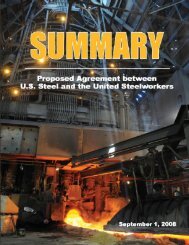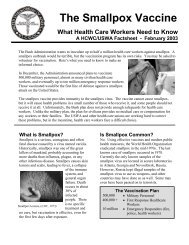Ergonomic Fact Sheet #3 - United Steelworkers
Ergonomic Fact Sheet #3 - United Steelworkers
Ergonomic Fact Sheet #3 - United Steelworkers
Create successful ePaper yourself
Turn your PDF publications into a flip-book with our unique Google optimized e-Paper software.
UNITED STEELWORKERSHealth, Safety & Environment Department<strong>Ergonomic</strong> <strong>Fact</strong> <strong>Sheet</strong> <strong>#3</strong>CONTACT STRESS: An example of contact stress is when a tool handle or edge digsinto the soft tissue of the palm of the hand. Another example is when a job task requiresyou to use your hand as a hammer. This puts pressure on soft tissues and results in damageto those tissues.VIBRATION: The vibration from some tools such as jack hammers can damage the softtissue in the shoulder, arm and hand. Vibration can also be transmitted to the whole bodyfrom the ground or from the seat of a vehicle. The vibration can damage soft tissue in theback.COLD TEMPERATURE: Working in a cold temperature can damage soft tissue that isexposed to the cold.Work OrganizationWorkers’ risk of developing musculoskeletal disorders is affected by the way in whichwork is organized, or work organization. Work organization is often defined as “the socialaspects of work that organize how things are done, by whom, with what, how often, howlong, etc.”Work organization includes factors such as: pace of work, workload, staffing levels, hoursof work, supervision, production quotas, deadlines, and number and length of rest breaks.How work is organized can increase (or decrease) workers’ exposure to risk factors formusculoskeletal disorders. For example, if the speed of an assembly line is increased tomaximize production, this will often increase the number of repetitive motions workers onthat assembly line will have to perform. Working under deadlines or production quotas cancause muscles to tense up, adding to "wear and tear" on soft tissues and increasing the riskof musculoskeletal disorder.The Result of Exposure to Risk <strong>Fact</strong>ors for Musculoskeletal DisordersExposure to risk factors for musculoskeletal disorders often results in workers working inpain. If wear and tear reaches a certain point, disability can result. This can affect not onlya worker's ability to work, but also to do other activities such as opening a jar, chopping anonion, driving a car, lifting a child, turning a door knob, getting dressed, and holding a4


